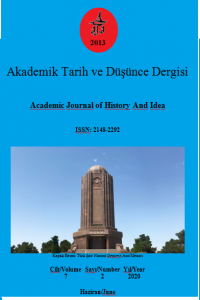Tebriz’in Mimari Sembolü: Gök Mescit
Gök Mescit İslam dünyasının firuzesi olarak İran’ın İslam döneminden sonra mimari ve sanat konusunda şah eseridir. Gök Mescit Abu Muzaffer Cihan Şah Kara Koyunlu tarafından yapılmıştır. Tebriz’în Gök Mescidi ya da Cihan Şah mescidi İran’ın mimari konusunda en değerli kalıntılarından sayılır. Mimari tarz açısından başka mescitlerin mimari örneklerinden farklıdır. Bu mescit lacivert ve firuze muarrak fayanslarıyla çok güzel hat çeşitleriyle örnek için süls, nestalik, nesih, islimi ve geometrik tarzlarıyla sanat severleri kendine çekiyor. Bu binanın geçmişi 15’inci yüzyıla tarihlenmektedir. Mozaik döşeme zerafeti ve çeşitli kullanılan hat sanatı ile işlenen nakışlar ve renklerin uyumu özellikle muarrak sanatıyla döşenen lacivert renkler nedeniyle bu bina İslam firuzesi olarak tanınmıştır. Bina çeşitli isimlerle örnek olarak Türkçesi Gök Mescit, Farsçası Mescidi Kebut, Mescidi Şahı Cihan, İmaret ve Mescidi Muzafferiye olarak bilinmektedir. Gök Mescit binası 1779 yılında meydana gelen deprem ile çok tarip olmuş ve kümbetleri tamamen dökülmüştür. Günümüzde bu binadan sadece giriş kapısı ve birkaç sütun kalıntısından başka birşey kalmamıştır. Ancak bu kalıntılar mescidin 1465 yılının azametine sahip olarak günümüze kadar gelmiştir.
The Architectural Symbol of Tabriz: Gök Masjid
As the turquoise of the Islamic world, the Gök Masjid is the masterpiece of architecture and art after the Islamic period of Iran. Gök Masjid was built by Abu Muzaffer Cihan Shah Kara Koyunlu. The Gök Masjid of Tabriz or The Cihan Shah Masjid is considered to be one of the most valuable ruins of Iran in terms of architecture. It is different from the architectural examples of other mosques in terms of architectural style. This masjid attracts art lovers with its dark blue and turquoise tiles and very beautiful calligraphy varieties, for example, with its nastaliq, nesih, islamic and geometric styles. The history of this building is dated to the 15th century. This building is known as the Islamic turquoise due to the elegance of the mosaic flooring and the embroidery and the harmony of the colors, which are embroidered with the various calligraphy , especially the dark blue colors laid with the muarrak art. The building is known as Gök Masjid in Turkish, Kebut Masjid in Persian, Shah Cihan Masjid, Imaret and Muzafferiye Masjid, it has various names. The Gök Masjid building was destroyed by the earthquake in 1779 and its cupolas were completely destroyed. Today, nothing remains from this building other than the entrance door and a few remains of columns. However, these remains have survived to the present day with the magnificence of the mosque in 1465.
___
- Aslanapa, O. (2015). ‘’Düşünce Dünyasında Türkiz’’ Siyasal ve Kültürel Dergisi Ankara 2015; 145-154.
Bartold, V. (1979). Teskere Coğrafyaye Tarihiye İran. (Çev. H. Serdatver). Tahran: Tus Yayıncılık.
Divlafova, J. (1982). Safernamei Divlafova, çeviri İ. Ferveşi cilt 2 Tahran Hayyam Yayıncılık.
Evliya Çelebi Seyahatnamesi. (1848). Cilt 2
Feuvrier, J. B. (1984). Sesal Der Derbar-i İran, çeviri Abbas İkbal cilt 2 Tahran s. 51.
